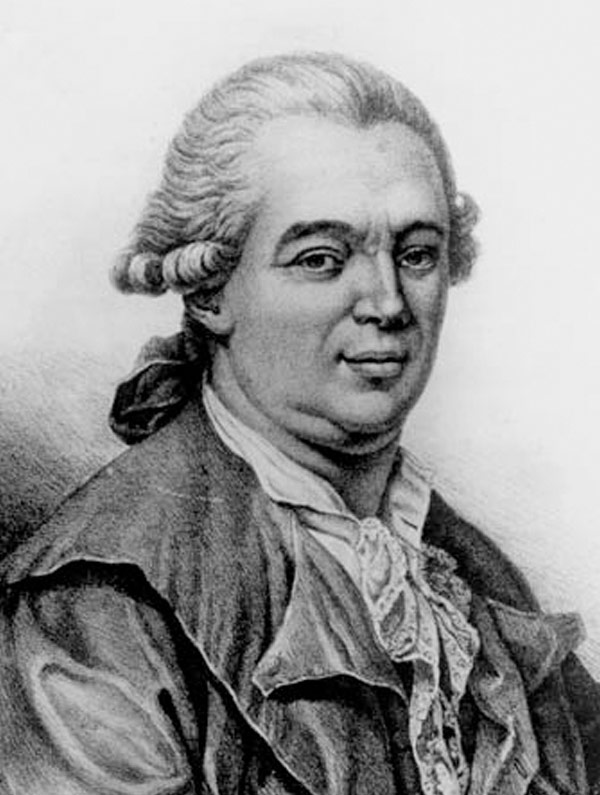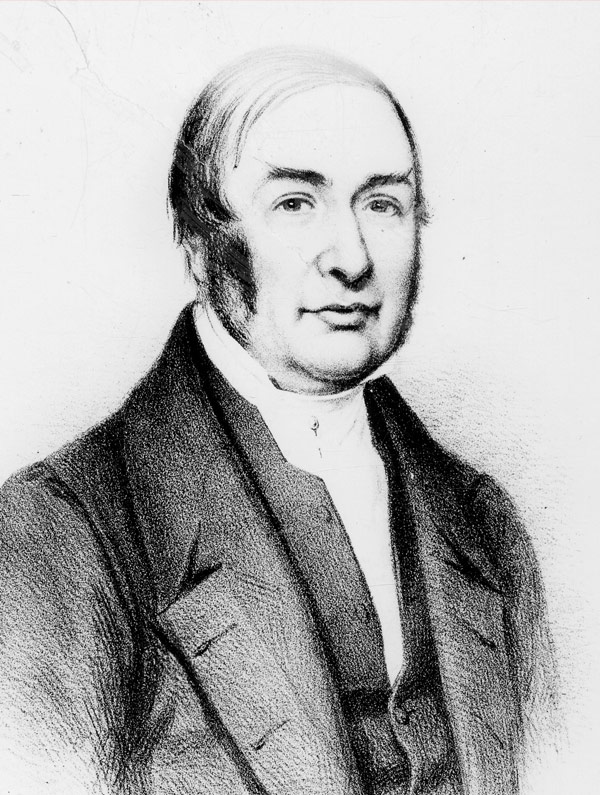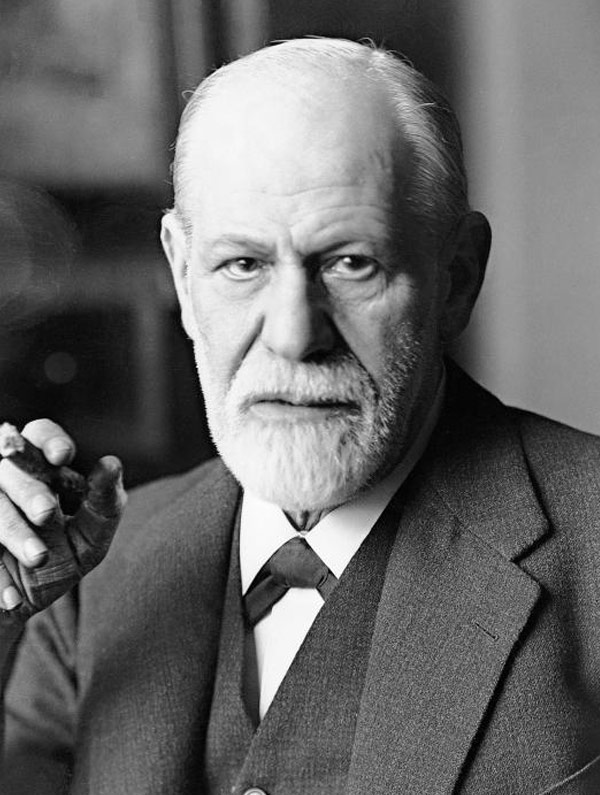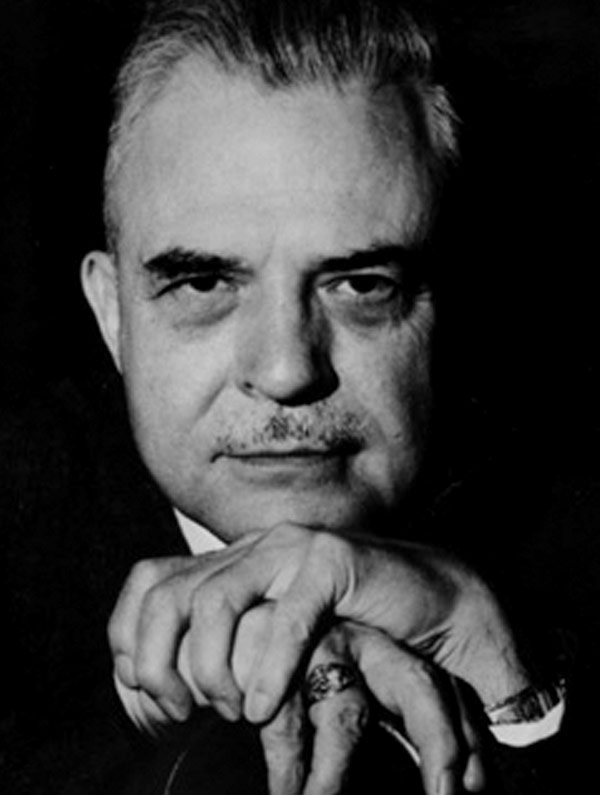Franz Mesmer

Franz Mesmer (1734–1815) had a theory that the health of our bodies is influenced by a magnetic fluid within the universe. To test his theory, Mesmer experimented with manipulating magnets around a person in an attempt to cause healing. Mesmer had his first hysteria-suffering patient, Francisca Österlin, swallow a preparation that contained iron. He then moved magnets around her body to see if there would be a reaction. Indeed, she reported that she felt “streams of mysterious fluid” flowing around her body. Most importantly from a therapeutic perspective, her hysteria symptoms subsided for several hours following Mesmer’s magnet manipulation.
Mesmer continued to experiment with magnets in various forms. Eventually, he noticed the same results by moving hands around the person, what later became known as "Mesmeric passes" and is the root of the modern word “mesmerize”.
In his famous 88-page book, Mémoire sur la découverte du magnétisme animal, Mesmer outlined his 28 Propositions. The propositions have a lot of similarity to the Qi concept of Traditional Chinese Medicine, and are thus one of the earliest parallels between hypnosis and oriental medicine.
Treating patients both individually and in groups, Mesmer even developed a method of collective treatment - the baquet, named after a special vessel around which the group sat during the session.
In 1784, King Louis XVI tasked a Board of Inquiry (which included Benjamin Franklin and Antoine Lavoisier, among others) to investigate the effectiveness of Mesmer’s and similar methods. In placebo-controlled experiments, the panel found Mesmer's results valid. Yet, without being able to physically see the process of how it was working, the panel concluded that the results were likely due to the hypnotized person belief (a.k.a, the placebo effect).
James Braid

Franz Mesmer saw hypnosis as some semi-magical force, that mystically allowed the hypnotizer to transfer thoughts and intentions to the hypnotized. However, his contemporaries argued against the “magical” component of hypnotism.
Eventually hypnotism made its way into the medical field as a practical and effective component of treatment. In addition to all the surgeons and physicians who embraced the use of hypnosis, it caught the attention of researchers like James Braid. From watching Mesmer-type magnetism, Braid saw that the subjects were indeed in some different state. His conclusion was based primarily on observing how the subject’s physical condition was different, especially their eyes and eyelids.
Instead of relying on any sort of magnetism, Braid focused on the how hypnosis affected the person internally. To test his theories, Braid even hypnotised himself - with extraordinary success. Braid uncovered how hypnotism is beneficial both on a biological and physical levels. In his research, Braid found similarities between his hypnotism practice and a number of ancient spiritual practices, most notably Hindu yoga and meditation.
Following the findings of King Louis XVI’s panel, Braid moved the theory of Mesmerism from mystical to a more rational and common-sense approach - in essence, that it is a neurological process, not a magical one.
Hysteria vs. suggestion
As the practical use of hypnotherapy evolved a debate developed at the end of the 19th century between the two most influential hypnotism thinkers of the time: Hippolyte Bernheim and Jean-Martin Charcot. Charcot operated what became known as the “Paris School” and Bernheim’s became known as the "Nancy School".
Influenced by the Mesmerists, Charcot considered hypnotism an abnormal state of the nervous system particular to only certain hysterical women. To him, hypnosis resulted in a sequence of physical reactions, which could be subdivided into distinct stages. Bernheim, on the other hand, insisted that hypnosis can work on anyone since it is merely an extension of the normal functioning of our psyche. To Bernheim, hypnotism worked because of the power of suggestion. Bernheim’s view won out, as numerous studies show the the effect of hypnosis on brain functions in both male and female patients.
Sigmund Freud

The famous founder of psychoanalysis was also a student of hypnotism. According to a research study published by the Hebrew University of Jerusalem, he became a fan of hypnotherapy watching a Hansen the Magnetist perform hypnosis, and immediately went to both the Paris and Nancy schools of hypnosis to learn what he could from the masters of the day. Freud subsequently used hypnosis on own patients, particularly to help them uncover repressed memories. He put emphasis on hypnotic regression and catharsis as channels for therapy.
Freud’s method of inducing hypnosis started with seating his patient comfortably and asking that he look fixedly at two fingers of Freud’s right hand. At the same time the patient was requested to pay close attention to the sensations that took hold within him.
Observing Bernheim’s experiments in 1889 moved Freud to the conviction that there could be powerful mental processes hidden from the human consciousness (i.e. the subconscious). He noticed how Bernheim’s use of suggestion prompted patients with posthypnotic amnesia to recall lost memories in a hypnotic session, gradually restoring memories from the subconscious to the conscious. Based on his observation of hypnosis, Freud saw post-hypnotic suggestion as a demonstration that the mental unconscious does indeed exist and operates in a specific mode.
Hypnosis greatly influenced Freud’s development of psychoanalysis. While he later moved on from hypnotism to psychoanalysis, Freud eventually considered combining the two for faster results. outcome of treatment. Unfortunately, he died before putting that idea into practice.
Milton Erickson

One of the most influential hypnotherapists in the post-war period, Milton Erickson popularized a new branch of hypnotherapy, which became known as “Ericksonian therapy.” It’s defining characteristic is the use of indirect suggestion, analogies, double binds, confusion techniques and other methods instead of relying on formal hypnotic inductions.
Erickson used therapeutic metaphor and story extensively as tools for conducting his hypnotherapy sessions. By conceptualizing that the unconscious is highly separate from the conscious mind and that it has own awareness, responses, interests, responses, and learning mechanisms, Erickson came to see the unconscious mind as creative, often positive, entity that was geared for creating solutions.
To Erickson, transe was an everyday occurrence - and the unconscious mind was always listening, ready to take in an indirect suggestion. Because of his preference for indirect techniques, Erickson’s methods were generally more comfortable for the patient that a direct “you are going into a trance now” instruction. He thus tried to help subject accept his suggestions at their own pace, in a more accepting way.
Confusion was a tool for most of Erickson’s techniques, because confusion of the conscious mind forces a person to rely on the unconscious for answers. The “handshake induction” technique is perhaps the most famous one of Erickson’s uses of confusion for the induction of trance. Erickson understood the role of individual subject’s various forms of resistance to the hypnosis process - and so he took care to work with the resistance rather than trying to correct it.
Part of the controversy over Erickson’s method is the debate over whether his methods can be classified as hypnotism, especially since his subjects were not always in a hypnotic state. Erickson would argue that the unconscious mind is always listening regardless of being in a trance. He would base his therapeutic process on seeing which kinds of indirect suggestion the patient responded to (and would proceed accordingly).
Erickson’s influence is strong to this day, including on neuro-linguistic programming, strategy therapy, family systems therapy, and much more. Not just in clinical settings, but in business coaching much is owed to Erickson’s methods and research.
 Hypnosis Empire
Hypnosis Empire 
